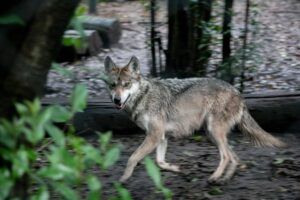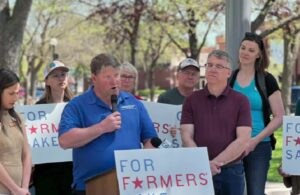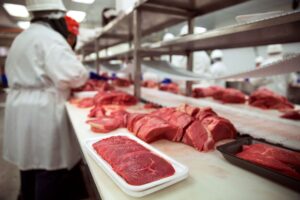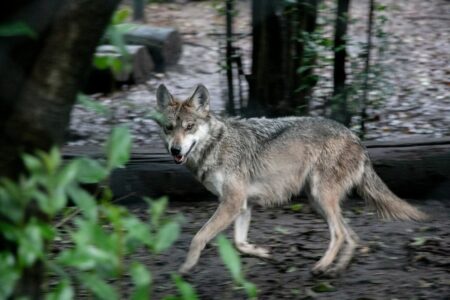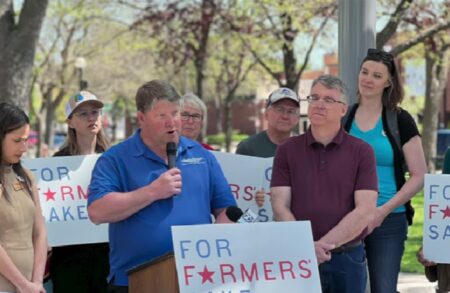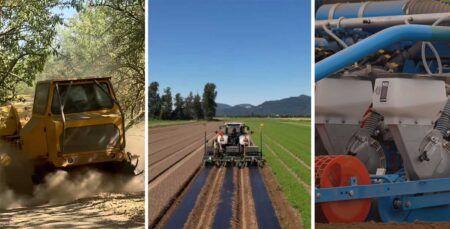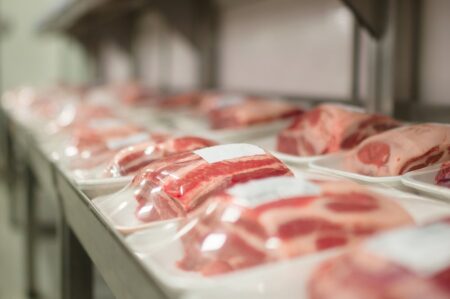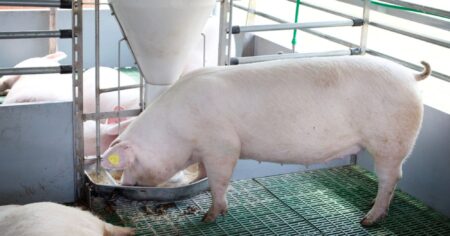Ryan Britt combines conservation practices, adaptive grazing, and dairy-inspired efficiency to improve both soil resilience and beef performance on his family farm in north-central Missouri. His focus on patience, testing, and data-driven management is boosting ROI across the entire operation.
Watch our Conversation
Meet Ryan Britt
Britt grew up farming with his father, Randy, and is the fifth generation on the family farm in north-central Missouri. He grows corn, soybeans, and wheat, and has a cow-calf to finish beef operation.
Conservation is a key motivator for Britt’s farming decisions, which earned him a Leopold Conservation Award from the Sand County Foundation in 2022. He has served as president of the Missouri Association of Soil and Water Conservation Districts, and is second vice president at the national level.
“We try to make sure that everything that we do is headed that direction. That starts with a no-till cover crop in all of our row crops. We try to get a cover crop established just as soon as the cash crop comes off, if not interceding into a growing cash crop,” he said. “We are kind of moving more toward adaptive management now.” Terraces, ponds, waterways, field buffers, a wetland, and CRP acres are also part of Britt’s efforts.
Honing Conservation Practices
Britt’s interest in conservation was piqued while attending the University of Missouri and working with the USDA Ag Research Service. He was exposed to farms using no-till practices, while his family’s farm was still doing conventional tillage.
When he came back to the farm after college in 2000, he and his father switched to no-till and began grid-based soil testing and using variable rate fertilizer applications.
Joining his local Soil and Water Conservation District board gave Britt even more ideas. “With that experience, I started getting exposed to more conservation practices and people that had been no-tilling and people that were already starting to use cover crops, which at the time was not very popular at all,” he said. “That gave us the confidence to try them on our scale and see how they would fit for us.”
Britt stressed that conservation is a long game, and the payoffs aren’t always immediate. “It didn’t happen fast. We would get frustrated with a weed problem that we had and how a tillage implement was handling that, and we weren’t able to get the results we wanted,” he said. “Most conservation practices require either more management or different management, and require a mindset of either patience or at least the open-mindedness or flexibility to do things differently.”
Testing plays a big part in deciding whether a practice needs to change. “We started testing everything. Dad calls our farm ‘University North’ because nearly every field has some kind of a comparison or test going on every year,” Britt said.
The Contribution of Cattle
While some producers have given up livestock to focus on crops, Britt said cattle are an important piece of the soil health puzzle on his farm.
“Grazing livestock on the cash crops actually gives us a lot of ability to heal the soil and to give the soil ability to produce more with less. And on our operation, we’re using the cattle on the pastures, trying to get them on there in a controlled way to get them back off and have rest so that grass can come back when we need it to.”
Plant diversity is part of that plan. “Kentucky 31 fescue is a wonderful easy button for grazing and we wouldn’t be able to raise cattle in Missouri without it, but we can do better. And we’re trying to do better by getting some of the natives back in. We’re trying to get legumes and brassicas and get forbes into our pastures,” he said. “It’s pretty amazing how the cows have the ability to graze what they need to when they need to.”
Britt has also evolved the farm’s feedlot facilities. His father and grandfather built a feedlot in the late 1960s. “They were very careful with what ran off by using grass and filter strips below it, but they would be the first to tell you that it did not make great use of that manure,” he said.
Just over a decade ago, Britt and his father built a zero-discharge bed pack feeding facility, adding bedding a few times a week and scraping a feeding alley. The whole barn is cleaned out once or twice a year.
“In the spring when we get muddy and in the summer with our heat, it’s pretty hard to feed cattle,” he said. “Under that roof, we get a more consistent environment for the cattle, so they’re able to eat and turn that into pounds of beef more efficiently, and we’re also able to maximize the nutrients that are coming out of them and be able to put that back on the crop in a controlled fashion that where we can put it where we need it, when we need it.”
Managing Manure
The Britts are now building a deep pit facility to allow for expansion and to cut down on bedding material and labor. The slatted floor will have rubber on top for cow safety and comfort. “We’ll capture all the nutrients coming out of those cattle and we’re going to have a couple of different options with those nutrients that are stored in that deep pit.”
The nutrients can either be spread directly on the fields, incorporated directly into irrigation systems, or separating liquid from dry materials in the pit and using the liquid as a fertilizer.
While deep pit systems may not be popular among feedlots yet, they are common in dairies. “The dairy industry has been doing this for a long time very successfully, and the difference between dairy and beef, in my opinion, is those guys are a lot tougher than I am,” Britt joked. “I think there are so many lessons we can learn, and I appreciate that we’ve been able to see so many great content providers that give us the confidence to try these things on our operations.”
Yield vs. ROI
Britt said while his conservation efforts don’t necessarily result in record yields, the payoff is seen in ROI since fewer inputs are needed.
“Honestly, yields are a lot more uniform across our fields. Instead of seeing the extreme high yield, but then the extreme holes that we would have in fields before, with the conservation practices, we’ve been able to level that out quite a bit and we see much more consistency,” he said. “We do not always have the top yield in the area and we’re not going to, but when we look at return on investment — which is how I get paid — we’re pretty competitive.”
Kari Weis-Asbury
For the Future
Britt said his kids are one reason conservation is important to him. He and his wife, Rebecca, have two daughters and a son.
“My dad was always trying to make things easier for me,” he said. “He’s instilled that in me, and looking at my kids, if they choose to come back to their operation, it does not mean that they won’t have to work for it, but it does mean that we’re trying to make the soil have the ability to withstand and have some resilience to the drought and extreme weather,” he said.
While increased ROI is great, Britt said it’s about more than the money: “I have to consider not only what the total dollars of income were for the year, but also how we’ve set the soil up for producing next year, and the year after that, and 30 years from now.”
Episode Highlights
- Britt is a fifth-generation farmer in north central Missouri raising corn, soybeans, wheat, and cattle.
- His conservation system includes no-till, cover crops, terraces, waterways, wetlands, and CRP.
- Adaptive rotational grazing builds healthier pastures with more plant diversity.
- A deep pack cattle barn improved efficiency in his feed lot. He is moving to a deep pit system inspired by dairies for the growing business.
- He’s exploring using manure for irrigation and fertilizer separation technologies.
- University of Missouri research and early exposure to no-till inspired his conservation mindset, and his use of constant side-by-side comparisons and trials.
- Conservation has improved soil resilience, reducing extremes and stabilizing yields.
- Britt emphasizes ROI over chasing top-end yields, balancing costs with returns.
- His father instilled a long-term mindset, preparing the soil for the next generation.
Links and Resources
Listen to the Podcast
Subscribe to 15 Minutes With a Farmer on Apple Podcasts, Spotify, or wherever you listen to podcasts. Please rate and review us!


